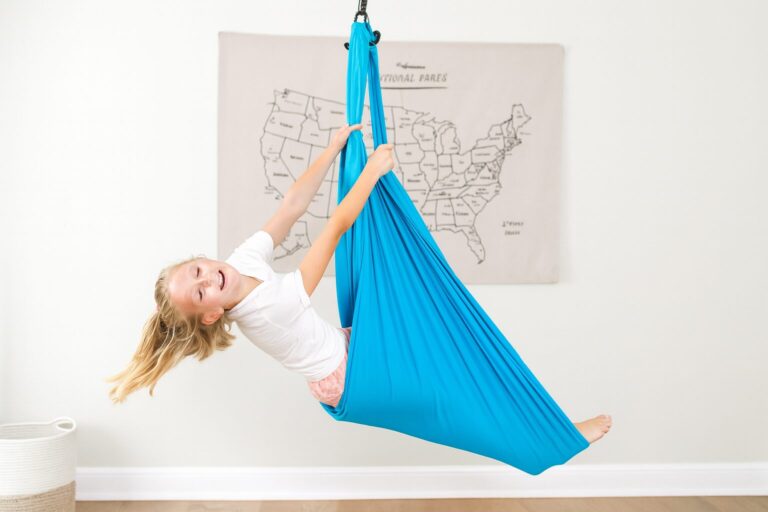Benefits of Compression Swings
- Provides soothing deep pressure input for proprioceptive needs
- Encourages calm, self-regulated behavior
- Offers gentle vestibular movement for sensory integration
- Flexible seating and movement positions for comfort
- Complements tactile sensory activities in home or therapy settings
Pros & Cons
Pros
- Provides both proprioceptive and vestibular input
- Can be used for calming or active play
- Supports a wide range of body positions
- Lightweight and portable
Cons
- Requires proper mounting for safety
- Not designed for high-impact swinging
- Fabric can stretch over time with heavy use
How to Set Up a Compression Swing
Most compression swings can be installed in two ways:
- Ceiling mount: Securely attaches to a ceiling joist with heavy-duty hardware
- Free-standing frame: Portable and renter-friendly option
For detailed setup instructions, visit our Sensory Swing Mounting Guide.
Top Compression Swing Picks
1. 360 Degree Swivel Hammock Swing – Ideal for deep pressure input and flexible movement. Check price on Amazon
2. Double-Layer Compression Swing – 300lbs max weight, extra durability for heavier use. Check price on Amazon
3. Indoor/Outdoor Compression Swing – Versatile for both home and backyard setups. Check price on Amazon
Related Resources
Frequently Asked Questions
What ages are compression swings for?
Most compression swings are designed for ages 3 and up, but always check the manufacturer’s weight and age guidelines.
How does a compression swing help sensory needs?
The snug fabric provides deep pressure input that can calm the nervous system, while the movement offers vestibular stimulation.
Can compression swings be used outdoors?
Yes, many models are weather-resistant, but storing indoors when not in use extends their lifespan.


